Tips For A Tooth-Friendly Independence Day

The Fourth of July offers fun activities full of fireworks, parades and celebrations. From hamburgers to watermelon to all kinds of delicious treats, Independence Day is a fun day for everyone. Amid all the celebrating, though, it’s important that you take care of your teeth by watching what you eat and which activities you participate in, especially when wearing braces. There are lots of food options to choose from, but it’s important to keep your oral hygiene routine in check to prevent tooth decay. Find out how you can enjoy Independence Day and protect your teeth at the same time with these tips!
Commit To A Regular Routine
During this holiday season, our lives go from our normal day-to-day routines to boating, barbecuing and playing with sparklers as we watch the fireworks. The Fourth of July is a week full of festivities that involve a lot of food and fun, but it’s also a time that we easily forget to maintain a good oral hygiene routine. Our daily routine should include how we take care of our mouth and teeth, which means we can’t skimp on brushing and flossing, especially with braces. Plaque loves to sit on teeth as long as it can so that acid can form and eat at your tooth enamel. The longer plaque remains on your teeth, the more likely you are to experience tooth decay. During the week of the Fourth of July, it may be tempting to let your kids skip their normal bedtime routine due to a firework show or a late-night party, but even one night of not brushing and flossing lets harmful bacteria wreak havoc on your child’s teeth. Braces are especially susceptible to the effects of poor oral hygiene as they easily trap food particles around the brackets and underneath the archwire. One tip that can help your kids remember their oral health during the holiday is to keep a brushing calendar. These calendars are simple and easy to use, and they help kids stay on track each day, no matter what busy activity they’re participating in. You can find a brushing calendar at most department stores or you can ask your child’s dentist for one.
Avoid Sugary Foods and Drinks

beautiful blonde child drink water outdoor
One of the biggest mistakes that kids and adults alike make during the Fourth of July involves the type of food that they consume, specifically sugary foods or meals full of starches. It’s hard to resist a juicy burger with a slice of cherry pie, a sugary funnel cake or a cold lemonade, but these holiday foods are full of sugar and starches that not only affect your waistline, but your teeth, as well. Eating lots of foods high in sugar increases your risk of cavities, even if you’re good at brushing your teeth. It’s easy to hand your child a juice box or can of soda while they’re watching the parade, but it’s more beneficial if you offer healthier choices, like water, to keep them cool and hydrated. It’s even better if you can give your child water that contains fluoride, which hardens tooth enamel and safeguards teeth against cavities. For picky kids, milk and fresh juices are also alternatives to sugar-packed sodas and do a good job at protecting teeth. Before all of your fun activities begin, plan out snacks and healthy options for meals that you can provide that will protect kids’ teeth while they’re out having fun. For those with braces, make sure to avoid hard foods like corn on the cob, chips and candy, and don’t forget about sticky foods like caramel, taffy and licorice. Hard and sticky foods are notorious for breaking brackets and wires, which are no fun to deal with on the Fourth of July.
Protect Your Braces
Choosing healthy food options over the holidays is an essential part of protecting braces, brackets and wires. Braces are durable orthodontic appliances, but even they can break from a simple accident, like biting an apple. To maintain the structural integrity of your braces, make sure to brush after each meal (which may be difficult to do when you’re out and about) and use threadable floss to remove pesky food particles from getting stuck. You may even need to use a proxabrush, which is referred to as a “Christmas tree brush” that thoroughly cleans between each bracket whenever normal toothbrushing can’t do the trick. Keeping your teeth and braces clean will prevent tooth decay from developing and will help remind you to watch what you’re eating. Lastly, make sure to schedule regular checkups and cleanings with your orthodontist to remove any plaque that may have built up around your braces and ensure that their functioning correctly.
Schedule A Checkup
At Belmar Orthodontics, we are prepared to help you enjoy this year’s Independence Day by providing dental and orthodontic checkups. Our experienced staff is dedicated to your oral health throughout the entire year, and we can help you and your family receive the beautiful smiles that you deserve. To schedule a checkup or for more tips on how you can protect your family’s teeth this Independence Day, call our office at (303) 225-9016. Your journey to a healthy smile begins today!
How Invisalign Can Increase Teens’ Confidence

While many teenagers need orthodontic care, some don’t like how traditional braces make them look or feel. With advances in modern technology and appliances that have been developed, teenagers have more options than ever to straighten their teeth without having to lose their confidence. Invisalign Teen offers the same benefits as traditional braces, but with the ability to use a clear, removable aligner. While nearly undetectable, teenagers will be able to get straight teeth without anyone knowing. Learn how Invisalign works and how your teenager can benefit from its groundbreaking system!
What Is Invisalign Teen?
Most teens will need orthodontic care, but many don’t like the look of traditional braces. Luckily, modern advances in orthodontic technology have created other options for them, such as Invisalign Teen, that allows kids to get straight teeth in one of the most discreet ways possible. Invisalign Teen eliminates the need for metal braces and brackets by replacing them with clear, removable aligners. Clear aligners work just as effectively as traditional braces but without the self-consciousness that metal braces typically bring. Before treatment begins, however, your teen will need an examination by their orthodontist and have diagnostic X-rays and impressions (molds) taken of their teeth. Crowded teeth and/or wisdom teeth may need to be removed before treatment begins so that the aligners can fit properly in the mouth. The orthodontist will then create a set of aligners that your child will wear, one after another, for the space of one to two years. These aligners will straighten their teeth over time, and each aligner will be replaced with another one as teeth begin shifting into proper alignment. Most patients will be required to wear their aligners anywhere from 20-22 hours per day, so your teen will need to be careful and consistent during their time with Invisalign.
Invisalign Teen offers many benefits other than invisible treatment. With Invisalign, your teen won’t have to sacrifice their favorite foods that tend to get stuck in traditional braces; all they need to do is remove the aligner to eat and drink, and they’re good to go. Your kid will also be able to continue playing the sports and activities that they love, and they’ll have less emergency visits since there are no wires or brackets that can break. Invisalign allows kids to use a mouthguard when playing sports and continue playing their instrument because it is removable. With Invisalign, your child will have newfound freedom that other orthodontic treatment can’t provide.
Taking Care of Invisalign Aligners
As with any other orthodontic appliance, your child will need to take strict care of their Invisalign aligners to keep them clean and free from damage. After they remove their aligner to eat or drink, it’s important that they brush their teeth before putting the aligner back in to prevent bacteria from building up on their teeth, which can lead to tooth decay. Additionally, your teen needs to brush their aligner each night before bed to keep them fresh and clean. Your teen will most likely be wearing their aligner for one to two weeks at a time, with a checkup every six to eight weeks to pick up their new aligner, so it’s essential that they keep their aligners in a safe place during that time. Aligners can break when dropped or can be damaged by pets or little siblings, so proper storage whenever they’re not being used will keep any accidents from happening.
Importance of Good Oral Hygiene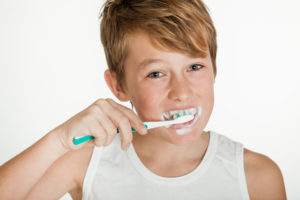
Having a good oral hygiene regimen will protect your child’s teeth from disease and keep their treatment plan on track. If teeth aren’t taken care of, orthodontic care can be slowed down as the orthodontist will have to address their cavities or tooth decay before treatment can continue. Brushing and flossing are essential before, during and after orthodontic care to keep teeth healthy and strong. Make sure that your teen is brushing with a fluoride toothpaste to strengthen their tooth enamel. Consistent flossing will also keep teeth decay-free by removing food particles that can get stuck and allow bacteria to grow. Additionally, using a fluoride mouthwash can aid brushing and flossing by adding the extra punch that teeth need to fight plaque and decay.
Scheduling A Consultation
If your teen would benefit from Invisalign, call Belmar Orthodontics today at (303) 225-9016! Our team of dedicated professionals is experienced with fitting Invisalign Teen and helping your child feel comfortable and satisfied during orthodontic treatment. Call today to begin your teen’s treatment for a beautiful, confident smile!
Perks of Lingual Braces

As modern technology has improved the tools and appliances that are now used in orthodontic offices, there are more options than ever for patients to get straighter teeth without the look of traditional metal braces. Lingual braces are an ideal option for patients who want orthodontic care but in the most discreet way possible. By using a hidden apparatus on the tongue-side of your teeth, you can get straight, beautiful teeth without sacrificing your confidence. Find out what other perks lingual braces have and what treatment looks like with this guide!
What Are Lingual Braces?
Braces have come a long way since they were first invented, and patients have more options than ever to get the straight teeth they want without sacrificing their confidence. Traditionally, metal braces were the most common type of orthodontic appliance used but were bulky and aesthetically not very pleasing. With the modern technology that has been developed during the last few decades, one type of braces in particular has become more and more common. Lingual braces are an alternative to traditional metal braces and provide utmost discretion as they are almost completely hidden. Unlike traditional braces whose brackets are attached to the front of the teeth, lingual braces are attached to the back side (tongue-side) of teeth, making them practically hidden from view. Fortunately, lingual braces can provide the same results as traditional braces but in a manner that is nearly undetectable. These braces are particularly helpful for patients, especially teenagers, who think braces are unattractive or distracting. Now, more than ever, patients can receive the orthodontic treatment they need without putting it off for aesthetic reasons.
How Lingual Braces Differ From Other Options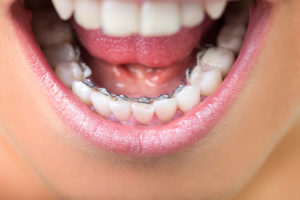
While the obvious advantage of choosing lingual braces over other orthodontic appliances deals with the invisibility of the braces themselves, there are other reasons why lingual braces might be the best option for you. Since their invention in the 1980s, lingual braces have slowly gained recognition as a viable option for orthodontic treatment. In fact, very few dentists even offer this technique because special training is needed to perform it. You will still need X-rays, molds and impressions of your teeth to begin treatment, just like you would when getting any other orthodontic treatment. The process is relatively easy to install them, as the brackets are glued to the lingual side of the teeth with a wire and elastics (if needed) to help move the teeth into position. Lingual braces are always on during treatment, so they are constantly shifting your teeth into the correct position without you or others noticing. A similar treatment to lingual braces is called Invisalign, which uses a removable aligner to straighten teeth. Invisalign is a popular option because the aligner is clear and removable so most people don’t notice it’s there, but not everyone is eligible for Invisalign. While Invisalign is a great option, lingual braces tend to be more helpful for patients with specific concerns. Athletes benefit greatly from lingual braces as it helps prevent mouth injuries since the brackets aren’t on the front of the teeth. Musicians, like those who play a wind instrument (flute, trumpet, clarinet, etc.), are also common wearers of lingual braces as they tend to not get in the way as much when playing. Lastly, those patients who don’t qualify for Invisalign typically choose lingual braces as it is the second most discreet option available. Depending on your needs and your orthodontist’s recommendation, you can choose which option you would like to get the beautiful teeth that you want, in the way that you want.
How To Begin Treatment
As mentioned previously, you must be eligible for certain types of orthodontic treatment to receive them. If you are interested in lingual braces, you will first need to visit with your orthodontist to have a consultation and evaluation to determine whether lingual braces are your best option. If you are a candidate, you will have impressions taken of your teeth which will be sent to a lab to create your custom-made brackets and wires. Afterwards, the brackets and wires will be bonded to your teeth to begin treatment. It is important to note that while lingual braces are a great way to keep your treatment unnoticed by others, the braces themselves are more difficult to clean since you can’t see them. For this reason, it is extremely important to clean your teeth thoroughly each day because it will be easier for food to get stuck and bacteria to grow in areas that are hard to see or reach. Another reason why it is important to consult with your orthodontist before choosing lingual braces is the price. Traditional braces typically range from $3,000-7,000, but lingual braces can be anywhere from $8,000-10,000. For patients who are on a budget, this is something to consider as you are in the decision-making process. Check with your dental insurance to see how much they can cover for orthodontic treatment. While many plans don’t offer coverage for adults over 18, many do partially cover children under 18. How much coverage will depend on your provider, so make sure to contact your insurance company for figures and amounts before you or your child begins treatment.
Get Started Today
At Belmar Orthodontics, our team is certified and trained for installing lingual braces. We are ready to help you and your family get the smile you deserve in a way that is most comfortable for you. For a consultation about lingual braces or more information about orthodontic treatment options, call our office at (303) 225-9016. Your journey to a healthier smile starts today, so call now!
Common Problems With Braces

As you begin orthodontic treatment, changes will occur in your mouth that could be uncomfortable or unexpected. Braces help patients get the beautiful and straight smiles that they deserve, but orthodontic treatment is not an easy process. As your teeth begin to shift, you can experience some tooth tenderness, lip sores, or pokey wires. These are all normal occurrences, but some patients can feel uneasy. Regular orthodontic visits can remedy these situations and help you feel back to normal in no time. Find out what to expect with braces and how you can treat these issues!
Problems That Braces Can Cause
As you begin orthodontic care, there are some problems to look out for that are commonly associated with braces. Although most of these issues are not serious, it is still good to know what to expect whenever you begin care. Once braces are placed, the process of fixing your malocclusion begins and your teeth will start to shift into their correct positions. As this occurs, soreness and swollen gums are both very common reactions to braces. Swollen gums can also influence tooth tenderness, which normally lasts between 2-4 days after braces are first placed. Dull aches can also accompany tooth tenderness but can be relieved by eating soft foods and an over-the-counter pain medication, if needed. Other common problems with braces include lip and cheek sores, pokey wires, and loose bands and/or brackets. Lip and cheek sores develop as the brackets rub against your mouth but can be remedied by placing a small piece of wax on the part of the braces that’s causing the irritation. Pokey wires can be caused by sticky foods or when a patient picks at their braces, and wax can also be used to cover the pokey piece or you can try pushing the wire back into place with a Q-tip or pencil eraser. Loose or broken bands and brackets normally aren’t considered an emergency and can be covered in wax until the next orthodontic appointment. If the broken bracket holds a rubber band in place or if a bracket on one of the upper or lower front teeth breaks, you will need an appointment as soon as possible to fix the bracket.
Serious problems that can be caused by braces include demineralization and gingivitis. Demineralization creates white scars that look like tiny white boxes and outline the area where the bracket used to be. These white scars are caused as food left on teeth come in contact with bacteria and create acid. The acid destroys calcium and phosphate in the teeth, which causes decalcification or white scars. Braces do not cause demineralization, but bad hygiene during treatment usually leads to white scars. Unfortunately, white scars normally don’t disappear after braces are removed and can even lead to cavities. Gingivitis, on the other hand, occurs as the gum tissues become inflamed and is one of the first steps to gum disease. Redness, swelling, tenderness and bleeding can result from gingivitis, but can be entirely prevented by brushing rigorously around the brackets and flossing regularly.
Importance of Good Oral Hygiene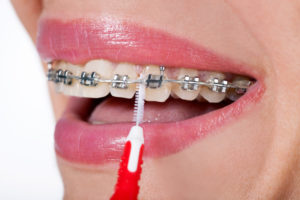
Many problems that come with braces can be avoided or lessened by sticking to a strict oral hygiene regimen. To properly maintain your braces, make sure to brush after every meal, use threadable floss or a floss threader and use a proxabrush. Even though it may seem excessive to brush after each meal, this practice can get rid of remaining food that may be stuck in your braces and prevent plaque and acid from building up (which helps prevent demineralization and gingivitis). Floss threaders are placed between the teeth and under the wire to aid in flossing. Threaders help you floss between each tooth, which can be difficult to do with braces in the way. A proxabrush is typically referred to as a “Christmas tree brush” and helps clean between each bracket. By placing the proxabrush under the archwire and between each bracket, you can thoroughly clean the bracket and remove any stuck food particles.
Maintaining a good diet, especially during orthodontic care, should be another important part of your oral health routine. Sticky or hard foods, such as nuts, popcorn, gum, caramel and chips, can damage your orthodontic appliance and hurt your teeth. Although the temptation may be great to cheat and eat one of these items, the consequence of doing so can be costly and painful. Eating these foods also gives you a higher risk of developing cavities during your time with braces, which can be difficult to treat. Make a list of the foods you should and should not eat, and stick to your oral health goals to keep your teeth and braces healthy.
Starting Orthodontic Care On The Right Foot
If you or a member of your family is in need of orthodontic care, call Belmar Orthodontics at (303) 225-9016! Our dedicated staff is ready to help you achieve your oral health goals and get a beautiful, straight smile. Call now to find out what options we have for braces and how soon you can begin treatment!
Signs That You Might Need Braces
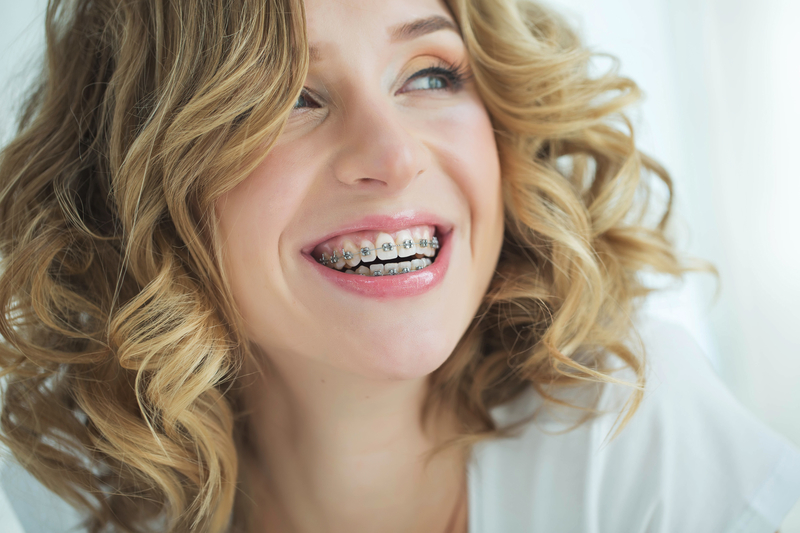
For many patients, getting braces is a big decision that affects oral health. How do you know whether you or your child needs braces, though? Some symptoms are obvious: misplaced or crowded teeth, or teeth that don’t meet normally. Other signs that you need braces are more inconspicuous, though, such as biting the cheek or a jaw that pops or shifts. While some of these symptoms are more serious than others, orthodontic care is the way to go to alleviate pain and correct any underlying issues. Learn about what signs you should be looking for to decide if braces are right for you with these tips!
What To Look Out For
As our teeth begin to erupt at a young age, they can fill into improper spaces or cause problems with adjacent teeth. Crooked or misaligned teeth aesthetically aren’t very pleasing for people, and most patients end up receiving orthodontic treatment during some point in their lives. Orthodontic problems don’t always mean crooked teeth, though. While there are some obvious signs that you might benefit from orthodontics, such as crowded teeth or an underbite/overbite, there are other symptoms that are less noticeable but equally as undesirable. The American Association of Orthodontics recommends that children have their first orthodontic visit between the ages of 7 and 8, but if certain complications are present, your child does not and should not wait until that age to be seen. If you have a young child, look for some of the following symptoms that warrant orthodontic care:
- Thumb or finger sucking
- Early, late or irregular loss of baby teeth
- Difficulty in chewing or biting
As children age, orthodontic problems will begin to show themselves, but some don’t appear until adulthood. No matter your age or prior orthodontic care, there are other symptoms that indicate a problem and should be addressed by an orthodontist. If you are struggling with a popping jaw, have to breathe through your mouth on a regular basis, are constantly biting your cheeks, and/or noticing teeth or jaws that are out of proportion to the rest of your face, you should have an orthodontic consultation. While many of these symptoms seem harmless or aren’t very noticeable, they can have long-term consequences that can negatively affect your oral health. Braces can remedy these issues so that your oral health isn’t compromised. It’s never too late for you to take charge of your oral health and get the smile that you deserve!
Advantages of Early Orthodontics
Not all kids will need orthodontic care, but many will. Meeting with your child’s dentist early on will help them determine whether your child would benefit from orthodontic treatment. If you have a child who needs an orthodontic issue remedied, there are certain advantages that come after receiving braces. Having your child evaluated by an orthodontist can help he/she observe the progress of incoming teeth, guide teeth into their ideal positions, monitor face and jaw development, detect hidden dental issues and reduce the risk of impacted teeth. For young children, orthodontic visits can sometimes be scary. Nonetheless, child orthodontic visits are simple and non-intrusive, so as to keep your child comfortable and happy. At Belmar Orthodontics, we do our best to give your child the care they need while making sure that their fears and questions are addressed. For adolescents, our options at include aesthetically-minded treatment options that will help your teen feel less self-conscious about braces. Braces can sometimes be seen as “dorky” or “uncool” for teens, but the list of options your teenager can choose from will give them plenty of choices to get straight teeth while still looking cool. Good oral health habits are started at a young age, and bringing your child in to see the orthodontist will help them establish those habits that will last a lifetime.
How You Can Benefit From Adult Orthodontics
Against popular belief, braces and orthodontic care aren’t just for kids and teenagers! In fact, one in five orthodontic patients is an adult; in just the U.S. and Canada alone, more than a million orthodontic patients are adults! You, as an adult, can benefit from the same care that young patients do and fix the orthodontic problems that you’ve been suffering from since childhood. As long as your teeth are healthy, you can receive orthodontic treatment at any age. The most common benefits of adult orthodontics include the following:
- More discreet treatment methods
- Correction of lifetime dental issues
- Faster treatment time than previous treatments
- Increased confidence and self-esteem
It’s important to note, however, that any previous orthodontic problems, such as periodontal disease or decayed/missing teeth, will need to be addressed before an orthodontic appliance can be placed. Once those issues are fixed, you’ll be fitted with braces and can continue your life just as usual. If you so choose, you can even opt in for hidden lingual braces or Invisalign clear, which will get you the straight teeth that you want while being completely unnoticeable. Speak with your orthodontist to determine which braces would be best for your needs before making any decisions.
Staying On Top Of Your Oral Health
Before any patient can receive orthodontic treatment, the health of their teeth, gums and mouth will first be evaluated. For this reason, it is important that children and adults alike are brushing twice a day and flossing on a nightly basis. The foods we eat also affects our oral health, as well. Especially during orthodontic treatment, certain foods, like sticky or sugary candies and food, can damage orthodontic appliances and make it easier for tooth decay to develop as plaque builds up on teeth. Brushing and flossing will partly diminish the effects of these foods, but not entirely. Make sure that you and your children are eating a healthy diet with minimal sugary snacks to avoid dental complications during treatment.
To ensure good oral health during and after orthodontic treatment, schedule an appointment with Belmar Orthodontics at (303) 225-9016 for a consultation.
Why Is Orthodontic Care So Important?

Many patients receive orthodontic care during childhood or early adolescence. As modern technology has advanced, so has the need for orthodontic care in patients of all ages. Whether your symptoms are severe or not, orthodontic care can help monitor face and jaw development, reduce the risk of impacted teeth and correct life-time dental issues. Early detection and treatment are essential for good oral health and maintaining a beautiful smile. No matter what your age is, find out how orthodontic care can benefit you now and what effects it can have on you in the future with this guide!
Benefits of Orthodontics
Just like any other product you buy or activity that you participate in, orthodontics is an investment. It is an investment of time, money and patience, but the results can be life-changing. There are a variety of options to choose from when receiving orthodontic care, and many are so discreet that you hardly even notice that they’re there. Orthodontic treatment helps establish good oral health and can pave the way for a healthy smile now and in the future. A healthy bite and a good-looking smile is just as important at age 60 as it is at 16, and orthodontic treatment is the way that you can ensure that you have both. For kids, some benefits of early orthodontics include:
- Observe the progress of incoming teeth
- Guide teeth into their ideal positions
- Monitor face and jaw development
- Reduce the risk of impacted teeth
- Detect hidden dental issues
As technological advances in dental science has improved, there are more options than ever for adults seeking orthodontic treatment. Many times, adults have been struggling with specific orthodontic issues since childhood that have never been resolved, but orthodontic care can fix that. Even though orthodontic treatment is most successful during adolescence as teeth and jaw bones are still developing, adults can still enjoy improvements to their oral health with orthodontic treatment at any age. Whether it be traditional metal brackets or other discreet options, like Invisalign, there are plenty of ways to straighten teeth. Some of the many benefits that adult orthodontics provide include:
- Faster treatment time than former orthodontic techniques
- Correction of life-time dental problems
- More discreet treatment methods
- Increased self-esteem and confidence
When To See An Orthodontist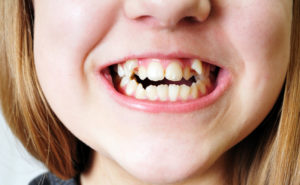
The American Association of Orthodontics recommends that children have their first orthodontic visit by age 7 or 8 to prevent the progression of any orthodontic issues that may be present. Even if you do not detect any dental issues with your child, it is still important that they get evaluated early on so that their teeth and jaw development can be properly monitored. If you notice that your child has bite problems or protruding teeth, it is time for them to see an orthodontist. Bite problems, such as a crossbite, cause the jaws to develop unevenly, while protruding teeth can be fractured or injured much easier than normal teeth. For both children and adults, there are certain signs that you should look out for that may necessitate an orthodontic visit. Some of these symptoms include difficulty chewing or biting, jaws that shift or make sounds, grinding/clenching teeth, biting the cheek or roof of the mouth, protruding teeth, and facial imbalance or asymmetry (facial features out of proportion). Even oral habits, such as thumb-sucking, affect how the mouth develops and can necessitate orthodontic treatment. For many patients, orthodontic treatment isn’t necessarily needed but is wanted to improve self-confidence and give them a prettier smile. Whatever your reason is, orthodontic care can help you reach your goals and improve your oral health at any stage in life.
How You Can Start
After you make the decision to begin orthodontic treatment for yourself or your child, the first thing to do is schedule an appointment with your orthodontist for a consultation. This consultation will allow both of you to establish appropriate goals, address concerns and develop a treatment plan. Additionally, taking good care of your teeth at home by maintaining an oral health regimen is important to keep your teeth healthy and prepare them for orthodontic treatment. Consistent brushing and flossing each day will protect your teeth and gums from plaque, tooth decay and cavities. During orthodontic treatment, it’s essential to maintain this routine to avoid any complications from occurring, which can extend treatment time and be costly to fix.
If you have questions regarding orthodontic treatment for yourself or your child, call Belmar Orthodontics at (303) 225-9016! Our talented staff is dedicated to you and your oral health goals, and will strive to help you get the beautiful smile that you deserve!
Teeth Cleaning Habits To Have With Braces

Good oral hygiene is one of the most important goals that we should all have to maintain the health and strength of our teeth and gums. Once we get braces, however, our oral hygiene regimen will change to account for the new appliance in our mouths that we will have to clean around. Whether you have traditional braces or lingual braces, cleaning around the brackets and wires is essential in preventing cavities and tooth decay. There are many options to choose from to clean between teeth, such as a proxabrush, and other tools to thoroughly brush around the brackets, such as an electric toothbrush. Find out what all you can do to keep your smile healthy and bright with braces with these tips!
Extra Care For Teeth During Orthodontic Treatment
Orthodontic care is one of the most helpful and important dental treatments that patients have readily available to them. While there are many versions of braces that help straighten our teeth and fix misaligned bites, there are certain precautions that we need to take to ensure proper care for our orthodontic appliances and teeth. Brackets and wires in the mouth make it easier for food particles to get stuck in, which can lead to dental problems, like cavities. Proper oral hygiene is essential during your time with braces to avoid any preventable issues that can lengthen your treatment time or need special care to be fixed.
Since braces naturally create nooks and crannies where bacteria can hide, it is important to maintain a good oral hygiene regimen everyday so that you can avoid tooth decay and gum problems during orthodontic treatment. If teeth and brackets are not kept clean, permanent damage can occur to the tooth enamel, as well. When this occurs, white spots (tooth decay) can begin appearing on the teeth where the enamel surface has lost minerals, which cannot be reversed. Bleeding or inflamed gums, called gingivitis, is also common whenever patients don’t clean their teeth thoroughly enough with braces, and it can be very painful. While it is not likely that all of these issues will occur if you miss brushing your teeth or flossing well a few times, you will be more prone to an increased risk, which will hurt your oral health and complicate the rest of your orthodontic care.
Teeth Cleaning Options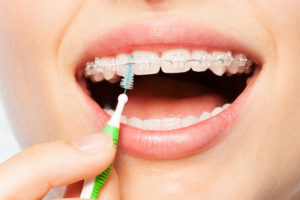
Although cleaning your teeth with braces isn’t too difficult of a process for most patients, there are some tools that you can use to better clean around the hard-to-reach areas in your mouth and make your time cleaning more efficient. First and foremost, make sure that you (or your child) are brushing after each meal. It may seem insignificant, but brushing after you eat removes food particles that are stuck in braces, reduces staining and prevents bacteria buildup. Secondly, use a threadable floss or floss threader to clean underneath the wire of your braces. A floss threader works by inserting the pointed end between the teeth and under the archwire. From there, move it back and forth until it is able to thread the floss between the teeth. Then, you can floss the two teeth, on either side, to remove all food that may be stuck there. If you’re having trouble with your floss getting stuck, consider using waxed floss, which slides between the teeth easier and doesn’t get snagged.
After brushing and flossing, using a proxabrush is helpful in cleaning between each bracket. Commonly referred to as an interproximal brush or “Christmas tree brush,” a proxabrush is placed between two brackets, below the archwire, and uses an up-and-down motion to remove any lodged food particles that brushing and flossing can’t get to. Clean the brackets with the proxabrush on both sides, starting either up from the bottom or down from the top, and repeat between each tooth. Another option for hard-to-reach areas is an oral irrigator, which uses a pulsating stream of water to remove plaque and food debris. Mouthwash is also a helpful tool to kill and bacteria that may have been left after brushing and flossing. For an extra clean, try using an electric toothbrush to maximize cleaning and brush those difficult areas of the mouth that are hard to reach.
Braces-Friendly Diet
The foods we eat and the diet we have affect our oral health and can interfere with orthodontic appliances. Eating sugary or starchy foods can let plaque develop around the brackets, which can lead to cavities, staining or even gum disease. Sticky or chewy foods, such as caramel, taffy, chewing gum and corn on the cob, should also be avoided as they can easily become stuck between brackets and be difficult to remove. Hard foods, such as candy, beef jerky, nuts and popcorn, are also no-nos as they are known to break wires and loosen brackets. If you’re going to eat hard or crunchy foods, such as apples or carrots, make sure to cut them into small, bite-sized pieces to avoid any possible damage.
Regular Orthodontic Checkups
Even if you or your child are following these rules, it is essential that you visit with your orthodontist regularly so that they can monitor teeth movement and adjust any wires or brackets. Your orthodontist or hygienist can show you how to use the tools previously described and give you additional teeth cleaning supplies to aid you during treatment. For more questions about how to clean your teeth with braces or what foods to stay away from, contact Belmar Orthodontics at (303) 225-9016!
The Impact Of Straight Teeth On Oral Health
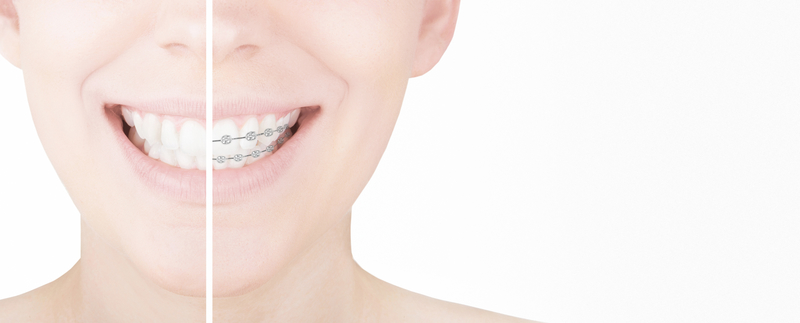
Many orthodontic patients use braces so that they can have straight teeth, but that’s not the only reason why orthodontic care is so important. Having straight teeth can minimize the likelihood of tooth decay and tooth loss while improving your bite, which affects your ability to chew and speak. Correcting crooked teeth can also improve your oral hygiene and strengthen teeth. Learn more about the positive effects that straight teeth can have on your oral health through this guide!
How Straight Teeth Can Help You
One of the main goals of braces is to create a straight smile and correct any orthodontic issues that may prevent teeth from remaining straight. While orthodontics does focus on straightening patients’ teeth, this is not the only purpose of receiving orthodontic care. Whenever a patient has malocclusion, or bad bite, caused by crowded or crooked teeth, daily oral hygiene can become a difficult task. Malocclusion can also stem from teeth that are out of alignment, or jaws that do not meet properly. Thumb sucking or accidents to the teeth can also cause malocclusion. As oral hygiene becomes more difficult to maintain, the likelihood of dental complications, such as tooth decay, periodontal disease, and tooth loss, increases. An improper bite that goes unaddressed can negatively affect chewing and speaking, and wear down tooth enamel. Correcting these problems is of utmost importance to your orthodontist as they seek to give you the best care possible. Orthodontic care that helps straighten teeth can decrease and ultimately eliminate the chances of any of these complications from arising. With straight teeth, patients can better brush and floss their teeth, which will help strengthen them, while easily monitoring any changes that may occur.
What To Expect With Orthodontics
As you begin your orthodontic treatment, there are a few tips that you should know to prepare yourself for what will be expected of you during your time with braces. Although there are some challenges with straightening adult teeth versus children’s teeth due to the pliability of the jawbone, modern technology allows any adult of any age the opportunity to correct crooked teeth with remarkable success. You will first meet with an orthodontist for an evaluation and orthodontics consultation to determine what option is best for your mouth. Any oral health issues, such as gum disease, will have to be resolved before you can begin treatment. Adults have a variety of options to choose from for their orthodontic care, with many discreet options, such as ceramic or clear braces, lingual braces, and Invisalign clear removable retainers, that are available for your needs.
For children, treatment is similar to that of adults and can start as early as the age of 7. Having an orthodontic examination early on can prevent the progression of orthodontic issues that are present and allow the orthodontist to monitor the development/eruption of teeth. Aesthetically-minded treatment options, such as incognito lingual braces, are available for young children who may be self-conscious about their orthodontic care. Most children and adults can expect treatment for 1-3 years, followed by a period of time in which a retainer will be used to keep teeth in their newly aligned positions. Regular dental and orthodontic visits will be necessary to track the progress of teeth and manage any plaque or tartar buildup that could accrue between teeth.
How To Keep Your Straight Teeth Healthy
Once you or your child finishes orthodontic treatment, it is important to continue certain oral health standards to maintain the health of your gums and teeth. Eating a healthy diet, with or without braces, while limiting the amount of sugary foods you consume, will prevent plaque that can stain or damage your teeth. Brushing with fluoride toothpaste and flossing each day will also prevent any plaque buildup, prevent cavities, and keep your teeth clean. Good oral hygiene is especially important for patients wearing braces because you are more susceptible to plaque buildup around brackets and underneath wires. For additional protection, consider using a mouth guard while playing any sports or activities that could damage your mouth, if hit. Creating a good oral health regimen before you start orthodontic treatment will help you have a healthy mouth during and once braces are removed.
For more information on the importance of straight teeth on oral health and what you can do to get the straight teeth that you want, call Belmar Orthodontics at (303) 225-9016! If you’re ready to change your smile for the better, our team is ready to help you reach that goal for you and the rest of your family!
Orthodontic Appliances Your Child Might Need

As orthodontic technology has improved throughout the years, so have the different appliances that are used to treat children with braces. Depending on their jaw and bone structure, your child may need an orthodontic device to help guide their teeth and jaw into proper alignment. These orthodontic appliances are used to maintain space in the mouth and allow for proper tooth eruption and movement. Find out what types of appliances are available and which is best for your child’s needs through these tips!
Benefits of Child Orthodontics
Many, if not most, dental patients will receive some form of orthodontic treatment during their lifetime. Even if one’s teeth doesn’t show any kind of orthodontic issues, it is advantageous that patients, especially children, visit with an orthodontist to maintain good oral health. The American Association of Orthodontics recommends that children have their first orthodontic visit between the ages of 7 and 8 to prevent the progression of any orthodontic issues that may already be developing. Orthodontic treatment can lead to healthy, beautiful smiles at any age, but is most beneficial when completed at an earlier age. Some benefits of visiting the orthodontist early on include observing the progress of incoming teeth, reducing the risk of impacted teeth, and monitoring facial and jaw development. Early orthodontic evaluations can discover hidden dental issues and decrease the risk for permanent teeth extractions, as well. Early detection of any dental issue is vital in maintaining good oral health for patients of all ages, and should be a goal that all children should obtain from an early age.
Types of Appliances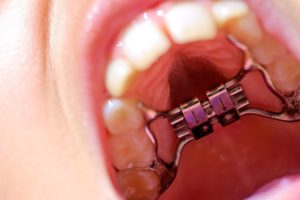
Whenever patients think of “orthodontia,” they typically think of braces. For young patients, braces are common orthodontic appliances that they can receive to straighten their teeth and correct any dental issues. Child orthodontics includes other appliances than just braces, though, and these appliances fulfill an important function in your child’s overall treatment. Orthodontic appliances change the way your child’s mouth works by correcting certain bone problems. Headgear, for example, guides the jaw into the proper direction by holding the upper jaw until the lower jaw can catch up with it. Retainers are other useful tools that keep teeth in the correct position after braces are removed, and most children will use some type of retainer during or after their treatment.
There are other orthodontic appliances that aren’t as well known but are used quite often in child orthodontics. The Nance “Button” is one of those appliances that uses a holding arch to maintain space in the mouth for children who have lost their baby teeth and are waiting for permanent teeth to grow in. If baby teeth are lost prematurely, the first molars might move forward into an incorrect position as they erupt because there is nothing holding them back. The Nance is an acrylic plate (the button) that covers a section of the palate with two metal bands around the back teeth to hold them into position until permanent teeth develop. This process helps maintain the proper space for permanent teeth to grow into. Another less-known appliance is the lower lingual holding arch, which does the same thing as the Nance but for the lower teeth. Two metal bands are cemented to the lower molars, joined by a U-shaped bar that rests behind the lower teeth. This keeps the back teeth from moving forward and maintains the space needed for future permanent teeth to erupt. Lastly, twin blocks are used to correct misalignments in the jaw that cause your child’s top teeth to stick out in front of the lower teeth further than normal. The blocks consist of two plates, one on the upper teeth and the other on the lower. These work together to bring your child’s lower jaw forward into the correct position, but is most successful when inserted while your child’s bones are still growing. They are the fastest-working appliances, and create quick results. Any of these appliances can be used in your child’s orthodontic treatment, so if you have questions about how they function or which one would be best to implement, make sure to ask your orthodontist.
What To Expect At The First Appointment
Most adult teeth erupt between the ages of 6 and 12, so whenever your child’s first permanent molars begin developing, the dentist will need to evaluate them to see how they work together. This process is called a “bite check,” and it helps orthodontists determine in what stage your child’s teeth are and what their treatment will require. The dentist will then decide which type of appliance would work best for your child and what instructions they will need to follow to get the best results out of their treatment. When using an orthodontic appliance, good oral hygiene will be necessary to prevent plaque buildup and other dental complications that could extend your child’s treatment time. Having your child brush and floss their teeth every day, along with cleaning whichever orthodontic appliance they’re given, will ensure that they get the healthiest and fastest treatment possible.
If your child is due for an orthodontic visit, or if they’re experiencing any of the orthodontic issues that we’ve discussed, call Belmar Orthodontics at (303) 225-9016 for a consultation to improve their oral health. Our dedicated team is ready to help you create a plan for your child to get them the smile that they deserve!
Diastema: What Is It?

A gap between the teeth, called “diastema,” are common among many dental patients and can be found between any teeth in the mouth, but usually between the two upper front teeth. Why do these spaces develop, and what are the differences between a diastema in children versus adults? Diastemata develop through a variety of reasons, such as misaligned jaw bones, missing teeth, and thumb-sucking. Not all spaces can be prevented, but many can be adjusted through orthodontic treatment. If you have a diastema that you would like to have treated, learn what your treatment options are through this guide!
Changes in Orthodontic Care
Orthodontic treatment options have been revolutionized through modern technology and dental science. Poorly aligned teeth have been a nuisance for dental patients for hundreds of years, and orthodontic work was even performed on willing subjects dating back to the ancient Egyptians and the Romans. From crude metal bands to catgut, archaeologists have discovered that even ancient societies performed orthodontic care on patients in an effort to straighten teeth. For those suffering from malocclusion, or misalignment, a common practice for moving emerging teeth into their correct position was by regularly pushing them with the fingers, a practice that has long been outdated since the invention of custom-fit metal appliances in the 18th century. Eventually, orthodontics treatment evolved into the process that we see today: brackets being cemented to each individual tooth with a metal wire attached to cinch the teeth together. Options for invisible treatments, such as lingual braces or even Invisalign, further allow patients to choose how they straighten their teeth. While there are so many options to choose from to decide how to straighten our teeth, how our teeth first develop and erupt in our mouth is a separate process. Since every patient is different and will experience a variety of dental issues, some patients may face something called “diastema,” which can have certain dental complications and be caused by a variety of reasons. Understanding how diastemata form and what you can do to fix them can give you the freedom to be in control of your oral health and appearance.
Gaps Between Teeth
Many people across the world are born with a diastema, or a gap between their teeth. These spaces can form anywhere in the mouth, but are most commonly found between the two upper front teeth. Both children and adults can have a diastema, and many times a child’s diastema will disappear once their permanent teeth grow in. While some gaps are relatively small and barely noticeable, others can be quite large and can cause cosmetic issues for some patients. While relatively harmless, most patients who fix their diastema do it for aesthetic reasons.
There are a variety of reasons why a diastema develops. A mismatch between the size of the jawbone and the size of teeth that develops can cause gaps to appear, or even too small of teeth (or a missing tooth) can create spaces, as well. Sometimes a diastema can be caused by an oversized labial frenum. This part of the mouth is a piece of tissue that extends from the inside of your upper lip to the gum just above your upper front teeth. Occasionally, this will grow too much and pass between the two front teeth, causing a gap. Bad habits, such as thumb sucking, can also lead to gaps between the teeth as the movement of the thumb tends to push teeth forward, creating a gap. A diastema can also develop due to incorrect swallowing reflexes. Normally, the tongue will push against the roof of the mouth when swallowing, but some people’s tongues may push against the teeth, which causes separation. This is called a tongue thrust. Lastly, gaps can form from periodontal disease in which inflammation damages the gums and teeth, which can cause teeth to loosen and fall out, or decay.
Treatment Options
A diastema can result from a mixture of orthodontic problems, or it can develop on its own. Many people who fix the gap in their teeth do it for appearance, but for those patients who have missing teeth, they might need to have a dental implant or bridge inserted. More often than not, braces are needed to close the gap between teeth, no matter where the gap is located. Fixing a diastema affects the entire mouth structure, so braces will be installed on both the top and lower teeth for proper alignment. If your diastema is due to an oversized labial frenum, a frenectomy will be performed to help the gap close on its own. If there is any sign of gum disease, periodontal treatment will be needed first to restore gum health before any braces will be put on. See open bite symptoms and causes.
Keeping The Gap Closed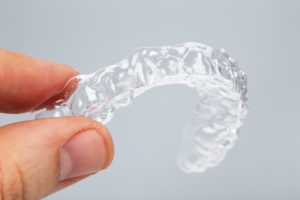
Spaces will tend to stay closed when done through orthodontic or dental repair. To prevent any gaps from developing in the future, make sure to wear your retainer that you will receive after treatment and use it according to your orthodontist’s instructions. For extra protection, your orthodontist might also splint (attach) the backs of the teeth to other teeth with composite and a wire to prevent them from moving. If you notice a space between your teeth or in your child’s mouth, contact your dentist for an evaluation to determine what kind of orthodontic treatment you might need. For more information on how to fix a diastema and improve your oral health, call Belmar Orthodontics at (303) 225-9016 to start improving your smile today!
